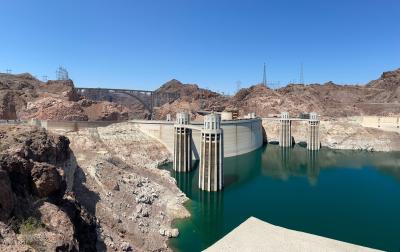Simulating Large-Scale Hydropower Under Climate Change: A State-of-the-Art Review
In contrast to wind and solar power, hydropower can be controlled to help meet power demands on an as-needed basis to facilitate decarbonized power grid operations. But climate change, particularly increasing droughts, may greatly limit hydropower production. This has motivated a growing body of research to understand the complex impacts of climate on hydropower generation. Studies are increasingly motivated by the need to inform power grid expansion planning and operations. This article provides an overview of current state-of-the-art approaches for simulating hydropower at subcontinental to global scales.
This study categorizes existing large-scale hydropower research into four methodological types and identifies data and model needs, common research applications, and appropriate spatial and temporal aggregation. Studies that include models of reservoir operations have come to dominate the field, while studies that replace detailed hydrological models with statistical or machine-learning techniques have yet to proliferate. The transition to increased detail in hydrological and water management modeling is both driven by and beneficial for simulating sub-annual (monthly, weekly) generation during extreme conditions, such as drought.
Hydroelectric power is playing a new and often expanded role in major power grids, offering low carbon generating capacity while providing the reserves and flexibility necessary to co-manage wind and solar resources. Driven by river flows, conventional hydropower is exposed to the vagaries of weather and climate, motivating climate impact studies at large spatial scales. In this study, researchers review methods of climate-driven hydropower simulation at large (multi-basin regions to global) spatial scales. They identify four types of approaches based on the complexity of the tools and the richness of the data employed. They find that the field has transitioned from scientific curiosity to practical application over recent decades, with studies increasingly motivated by the need to inform power grid expansion planning and operations. As the hydrological and water management models used in these studies become more sophisticated, new opportunities will emerge to study the impacts of changing hydropower on power system reliability and performance at large power grid scales. To grasp these opportunities, the water resources community must continue to enhance data and models for representing river flows, anthropogenic water use, and water management at subcontinental to global scales.

